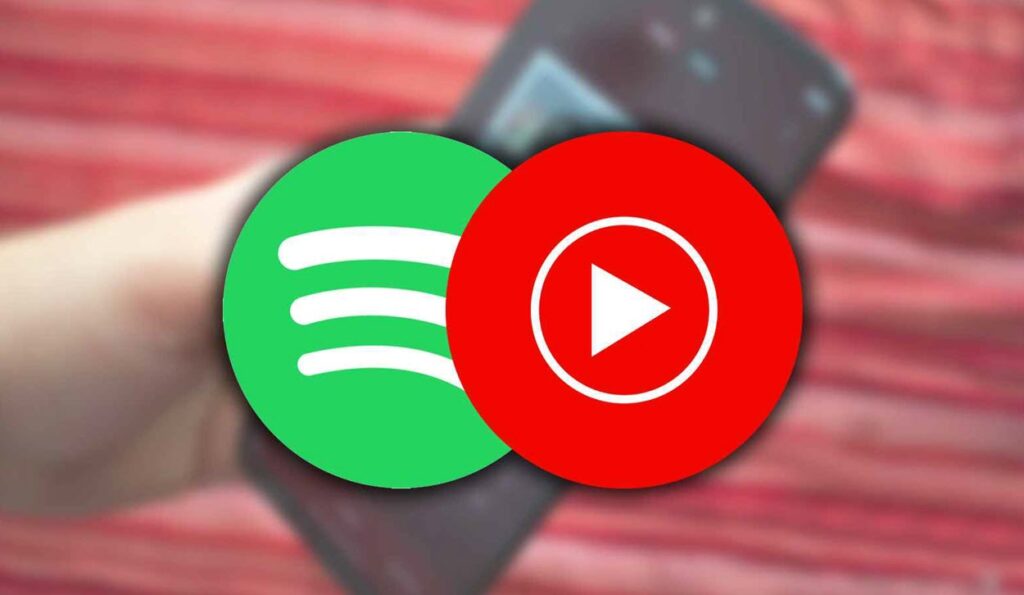Other Technology | May 22, 2024

Google’s platform is one of the best alternatives to Spotify, so we tested it to see what the main differences are.
Spotify is the preferred music platform, and it is now preparing a new price increase for this year. This comes at a time when there are other alternatives such as Tidal or Apple Music; however, one of the most popular due to its proximity to most popular video service is YouTube Music.
Google’s music streaming platform has the advantage of being backed by the American giant, but is it on par with Spotify? This is a question many users ask, since, although their prices are similar—with Spotify at €10.99 and YouTube Music at €9.99—Google’s platform also offers access to YouTube Premium for €11.99. This may be of interest to many users who regularly watch videos on the platform and want to remove ads.
We have decided to try Google’s alternative to Spotify as the sole service for listening to music for a few weeks, and the truth is that the app boasts some quite interesting advantages over its competitor.
Perhaps one of the sections where users spend the most time in these types of apps is in their library, as this is where all the music is organized into playlists. In this regard, both platforms offer all the basic options such as creating a new playlist or even starting to play a smart playlist with recommendations based on the chosen song.
The structure of both platforms is quite similar, essentially being a list of lists that includes several filters to display playlists, albums, and other content in an organized manner. In both cases, you can access a history to see the latest things you’ve listened to, and even view available podcasts. Similarly, both YouTube Music and Spotify support the playback of local files.
Their main screens are similar, but YouTube places a greater emphasis on video, making it more appealing if you enjoy watching music videos or live content. Both platforms feature short, vertical-format content, similar to TikTok, to recommend suggested titles.
Despite their similarities in this area, there are also marked differences. Spotify’s library appears better organized, with a cleaner interface and fewer elements. Conversely, YouTube Music’s main screen, with its more dynamic and casual appearance, encourages more exploration and discovery of new songs and artists.
This is an area where the two platforms differ significantly. YouTube leverages its vast array of video content, allowing users to watch a song’s music video or live performance while listening, if available. However, in such cases, the audio quality may slightly decrease compared to listening to the song without video.
Spotify, on the other hand, does offer some video content, but most songs are accompanied by a short vertical video. Where the platform excels is in the lyrics, thanks to its collaboration with Musixmatch. This feature syncs the lyrics with the music for many songs, allowing users to see the upcoming lyrics. In this regard, the app with the green icon receives more praise.
However, when it comes to recommendations, the situation is quite the opposite. While Spotify’s recommendations are not bad at all, those from YouTube Music tend to be more accurate. This is particularly important for those who like to discover new music frequently, but it might be irrelevant for other types of users. Personally, I consider it one of its major strengths.
Since YouTube boasts an immense catalog of videos, there is a wide variety of music options to choose from. What’s more, there are other alternatives like ambient sounds or live music available, which might not be part of an album or are simply uploaded to the platform by amateur musicians—a feature that is harder to find on Spotify.
Both applications are very closely matched, more so than a few years ago when YouTube Music was just starting out. During these weeks of testing the app, there’s a prevailing sense that it does some things better than Spotify. For a user who frequently uses the full version of YouTube, YouTube Music could be a real win. The dedicated music app is synced with YouTube, allowing users to create automated playlists with songs they like in the app. It also keeps a history of listened songs to provide better recommendations, one of its strong points.
However, YouTube Music has a lower maximum audio quality compared to Spotify, offering 256 kbps versus Spotify’s 320 kbps. This is a minor difference, and many people might not notice it. But, if one is looking for the best possible audio quality, it’s something to keep in mind. Spotify, on the other hand, has not yet added the much-anticipated HiFi audio that users have been waiting for.
In conclusion, the YouTube app offers better recommendations and is perfectly integrated with the video platform, additionally providing plenty of visual content alongside the music. In contrast, Spotify boasts higher audio quality and a less diffuse organization where music is almost the sole focus.
Furthermore, YouTube Premium, priced at 11.99 euros per month, includes additional benefits such as the ability to watch floating and background videos on Android, complete ad removal, and even the option to download videos from the platform. It also allows for viewing videos in higher quality, making it potentially the best option for regular YouTube users.